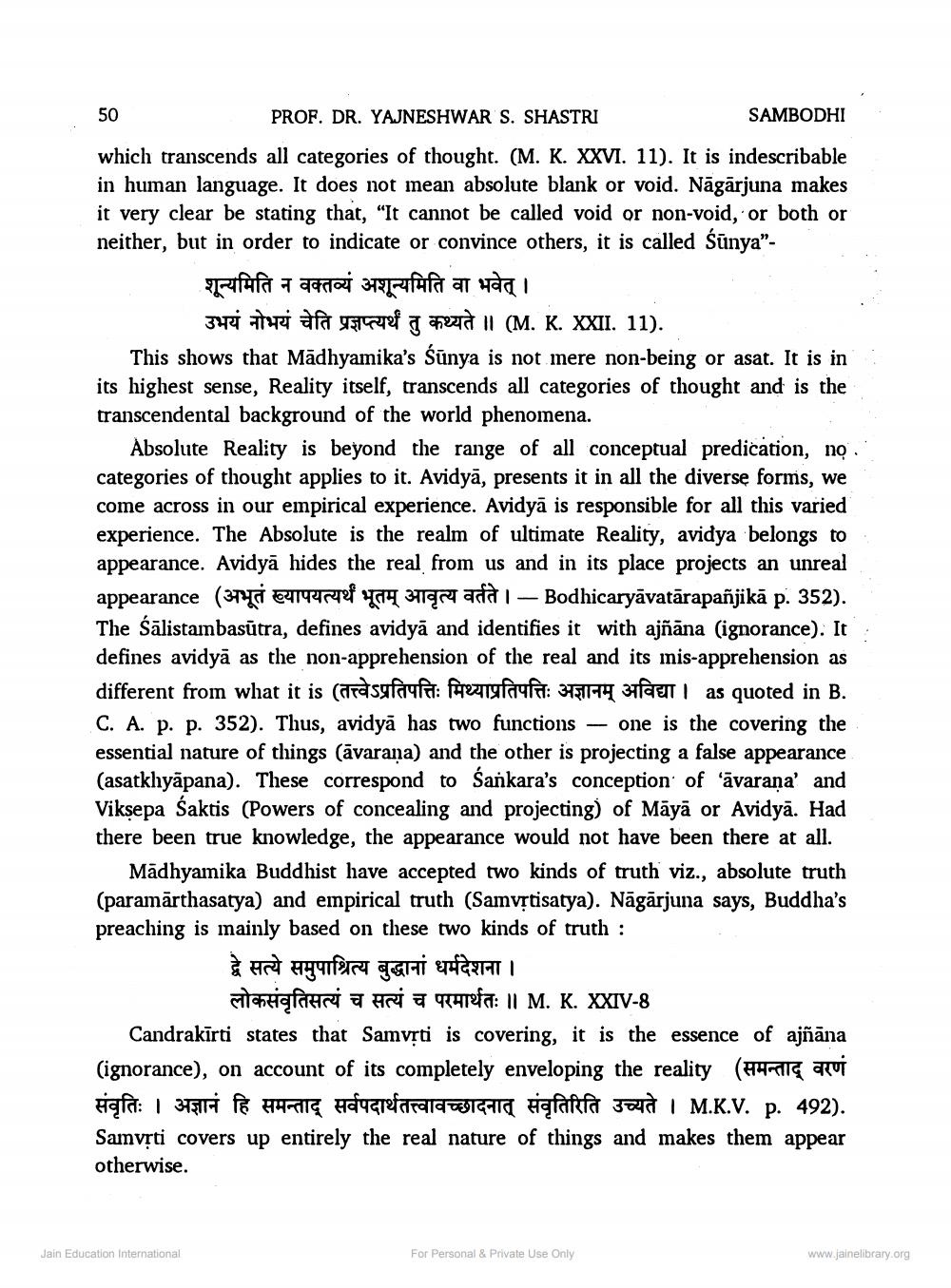________________
50 PROF. DR. YAJNESHWAR S. SHASTRI
SAMBODHI which transcends all categories of thought. (M. K. XXVI. 11). It is indescribable in human language. It does not mean absolute blank or void. Nāgārjuna makes it very clear be stating that, “It cannot be called void or non-void, or both or neither, but in order to indicate or convince others, it is called Sünya"
शून्यमिति न वक्तव्यं अशून्यमिति वा भवेत् ।
3441 que afa seyf geyid II (M. K. XXII. 11). This shows that Mādhyamika's Sünya is not mere non-being or asat. It is in its highest sense, Reality itself, transcends all categories of thought and is the transcendental background of the world phenomena.
Absolute Reality is beyond the range of all conceptual predication, no. categories of thought applies to it. Avidyā, presents it in all the diverse forms, we come across in our empirical experience. Avidyā is responsible for all this varied experience. The Absolute is the realm of ultimate Reality, avidya belongs to appearance. Avidyā hides the real from us and in its place projects an unreal appearance (37487641448488 474 34194 ada 1 - Bodhicaryāvatārapañjikā p. 352). The Sālistambasūtra, defines avidyā and identifies it with ajñāna (ignorance). It defines avidyā as the non-apprehension of the real and its inis-apprehension as different from what it is (crasyfauft: fhufayfa: 3451174 En I as quoted in B. C. A. p. p. 352). Thus, avidyā has two functions – one is the covering the essential nature of things (āvarana) and the other is projecting a false appearance (asatkhyāpana). These correspond to Sankara's conception of "āvarana' and Viksepa Saktis (Powers of concealing and projecting) of Māyā or Avidyā. Had there been true knowledge, the appearance would not have been there at all.
Madhyamika Buddhist have accepted two kinds of truth viz., absolute truth (paramārthasatya) and empirical truth (SamvȚtisatya). Nāgārjuna says, Buddha's preaching is mainly based on these two kinds of truth :
द्वे सत्ये समुपाश्रित्य बुद्धानां धर्मदेशना ।
Atlantiqfaruri a HRV a qurfa: Il M. K. XXIV-8 Candrakīrti states that Samvști is covering, it is the essence of ajñāna (ignorance), on account of its completely enveloping the reality (Hi-lig kui Hafa: 1 3511 F 4 G hd grefaraldaSIGHIQ Haraffat 3e4dt i M.K.V. p. 492). Samvști covers up entirely the real nature of things and makes them appear otherwise.
Jain Education International
For Personal & Private Use Only
www.jainelibrary.org




